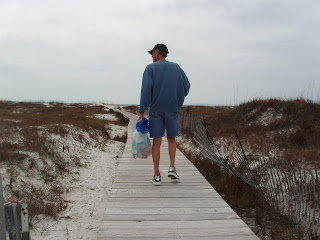The doctor said that the callous tool (unlike her scalpel) is designed to shave only one thin layer at a time, so there is no danger of cutting too deep. She said our body makes callouses when we run long miles in an effort to protect our feet. In reality, however, the callouses get too thick. Because they are so thick and hard, they lack the flexibility of normal skin, and cause the very pain and blisters they seek to prevent. I just know my foot feels much better than it has for a long time. It doesn't pinch when I run -- as if my skin was too small for my foot.
And I couldn't help but think that this incident makes a good object lesson. It's easy for some of us to build an emotional callous to protect us from others who might hurt our feelings or even cause us harm. The problem is that the emotional callous doesn't allow us to accept help, love and acceptance from those who want to be a true friend either. We need to take a callous remover to our physical AND emotional callouses, and make room for healing.

























